Attempting to install Windows 11 but encountering the error message "This PC can't run Windows 11" can be frustrating. This issue often arises due to certain security settings being disabled or your system not meeting the minimum requirements. Fortunately, there are several solutions to address this problem and successfully install Windows 11 on your PC.
In this guide, we'll walk you through the most effective methods to fix the "This PC can't run Windows 11" error, ensuring your system is ready for the upgrade.
Different Types of "This PC Can't Run Windows 11" Errors
When the error message appears, it usually specifies the reason why your PC can't run Windows 11. Common reasons include:
- TPM 2.0 is a requirement for running Windows 11.
- The system disk needs to be 64 GB or larger.
- The processor isn't supported by Windows 11.
- The PC must support Secure Boot.
- Your PC does not meet the minimum hardware requirements for Windows 11.
Understanding the specific reason helps in choosing the appropriate solution.
System Requirements for Windows 11
Windows 11 has specific hardware requirements that your PC must meet:
- Processor: 1 GHz or faster with at least 2 cores on a compatible 64-bit processor or SoC.
- Memory: 4 GB RAM minimum.
- Storage: 64 GB or larger storage device.
- System Firmware: UEFI, Secure Boot capable.
- TPM: Trusted Platform Module (TPM) version 2.0.
- Graphics Card: DirectX 12 compatible graphics / WDDM 2.x.
- Display: High definition (720p) display that is greater than 9” diagonally, 8 bits per color channel.
An internet connection and a Microsoft account are also required for Windows 11 Home setup.
1. Enable TPM 2.0 in BIOS
One of the primary reasons for the error is the absence or disabling of TPM 2.0. The Trusted Platform Module (TPM) is a security feature that Windows 11 requires. Here's how to check and enable TPM 2.0:
Step 1: Press Windows+R to open the Run dialog box. Type tpm.msc and press Enter to open the TPM Management window.
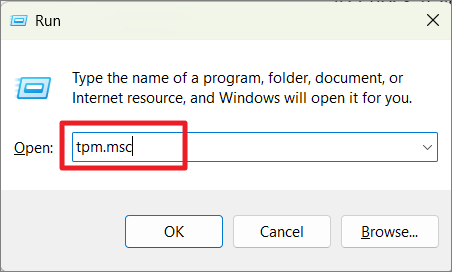
Step 2: In the TPM Management window, check the status. It should read "The TPM is ready for use." Additionally, verify that the Specification Version is 2.0.
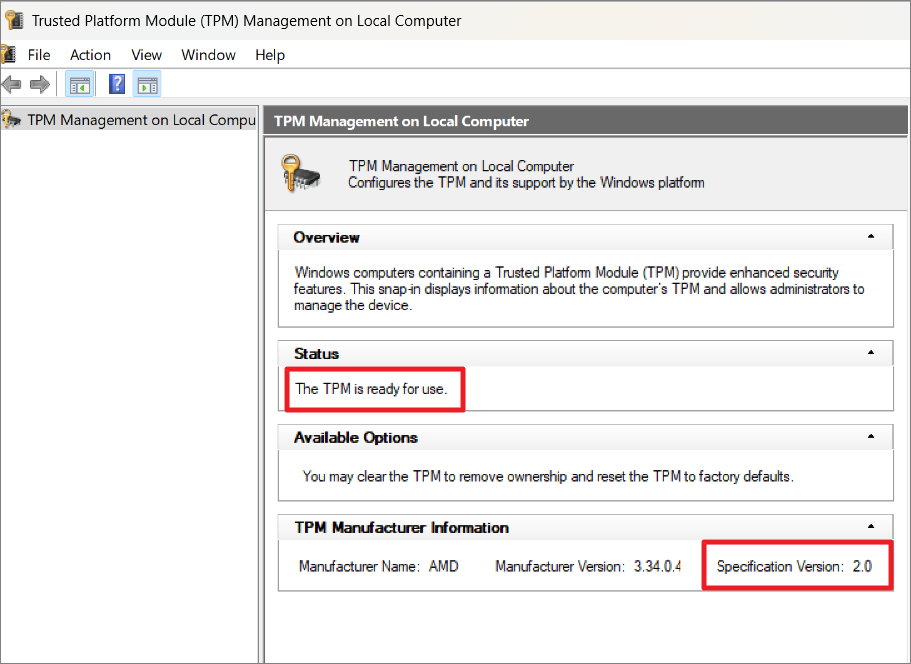
If you receive a message stating "Compatible TPM cannot be found," it means TPM is either disabled or not present.
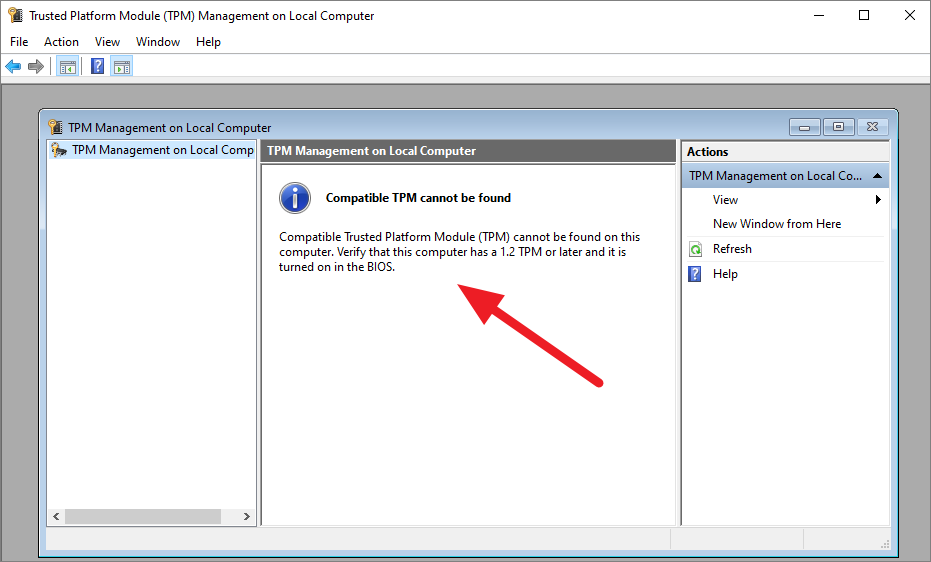
Step 3: Restart your PC and enter the BIOS or UEFI settings. The key to access BIOS varies by manufacturer (commonly DEL, F2, or F10).
Step 4: In the BIOS menu, navigate to the Security or Advanced tab. Look for settings labeled as TPM, Intel Platform Trust Technology (PTT), or AMD fTPM.

Step 5: Enable the TPM feature by setting it to Enabled.
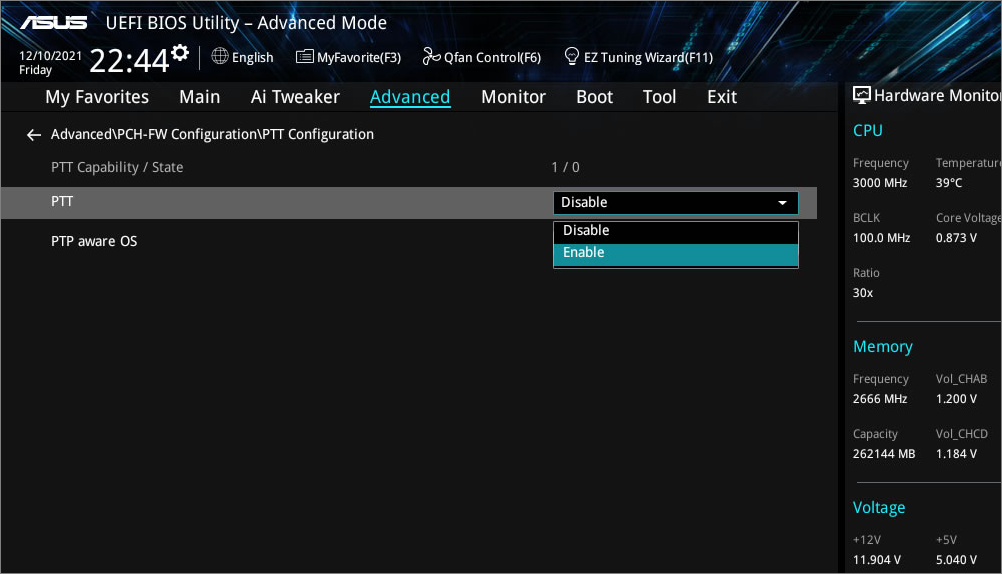
Step 6: Save the changes and exit the BIOS. Your PC will restart with TPM enabled.
After enabling TPM, try installing Windows 11 again to see if the issue is resolved.
2. Enable Secure Boot in BIOS
Secure Boot is another critical requirement for Windows 11. It ensures your PC boots using only software trusted by the manufacturer.
Step 1: Check the Secure Boot status by pressing Windows+R, typing msinfo32, and pressing Enter. In the System Information window, look for Secure Boot State.

Step 2: If Secure Boot is disabled, restart your PC and enter the BIOS settings.

Step 3: Navigate to the Security or Boot tab and find the Secure Boot option.
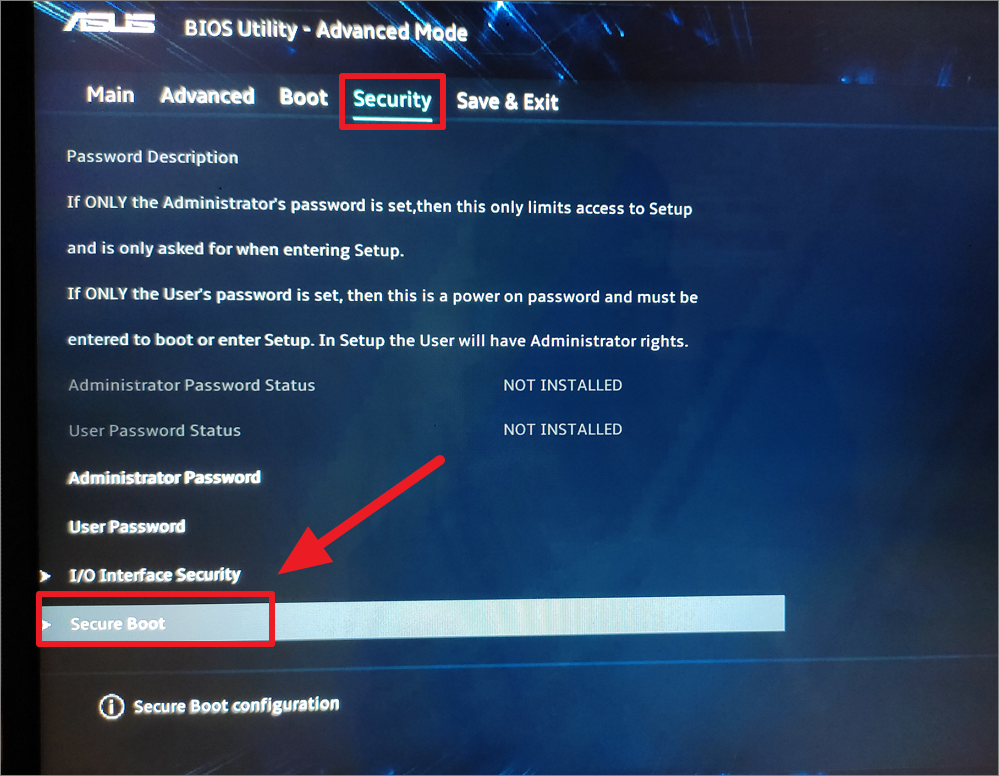
Step 4: Enable Secure Boot by setting it to Enabled or On.

Step 5: Save the changes and exit the BIOS. Your PC will restart with Secure Boot enabled.
With Secure Boot enabled, attempt the Windows 11 installation again.
3. Check if Your Processor Is Supported
Windows 11 supports only certain processors. Ensure your CPU is compatible:
Step 1: Open Task Manager by pressing Ctrl+Shift+Esc and click on the Performance tab.
Step 2: Click on CPU to view processor details.
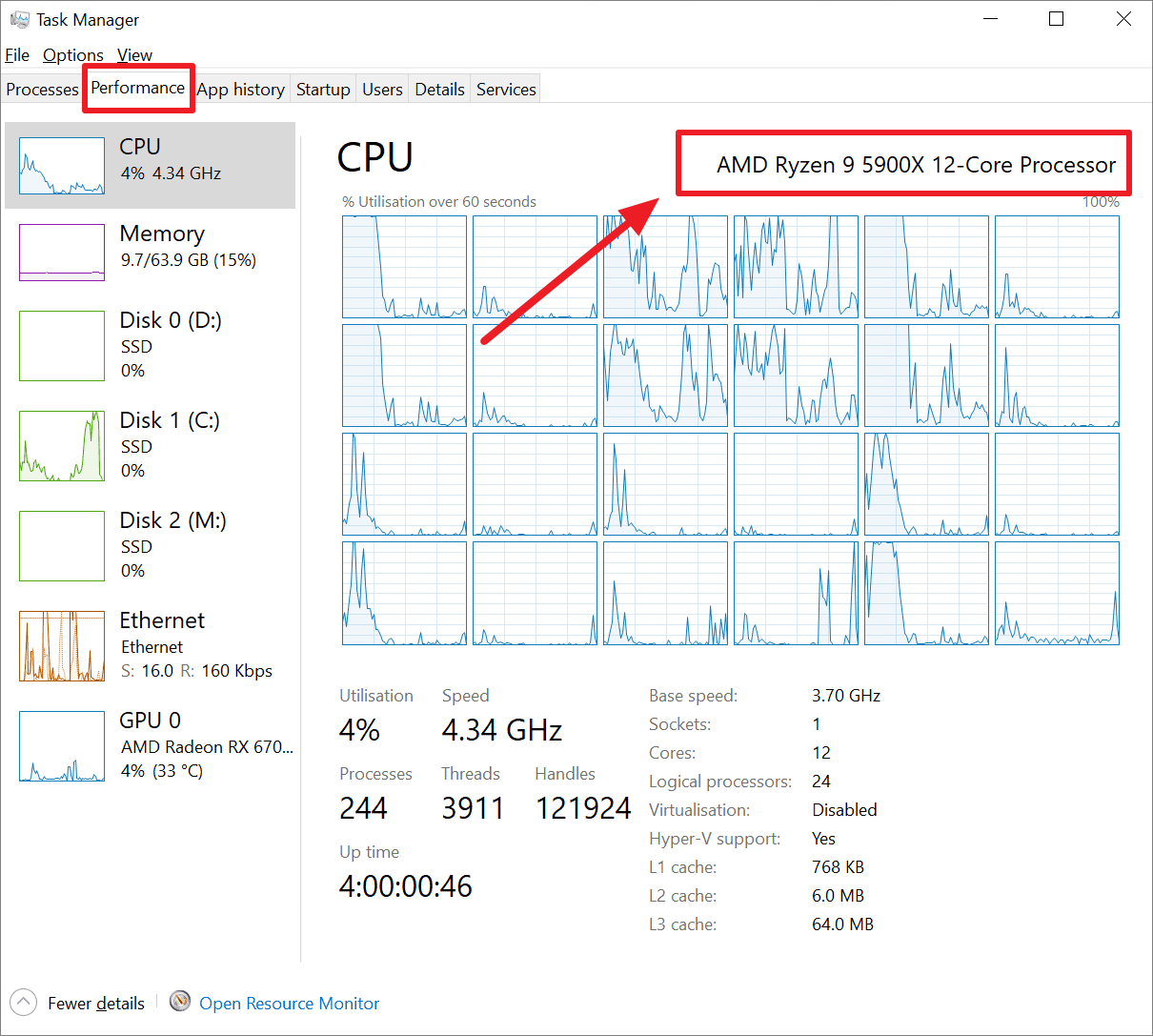
Compare your processor with the list of supported CPUs provided by Microsoft:
If your processor isn't supported, you may need to upgrade your CPU or consider bypassing the requirements (see Method 5).
4. Ensure Sufficient Storage Space
Windows 11 requires at least 64 GB of storage space. Here's how to check and free up space if needed:
Step 1: Open File Explorer and go to This PC. Right-click on the C: drive (or the drive where you plan to install Windows 11) and select Properties.

Step 2: Check the available free space. If it's less than 64 GB, you'll need to free up space.
Step 3: Delete unnecessary files, uninstall unused programs, and empty the recycle bin to free up space.
Extending the Partition
If you have unallocated space or another partition with free space, you can extend your system partition:
Step 1: Press Windows+R, type diskmgmt.msc, and press Enter to open Disk Management.

Step 2: Right-click on the partition you wish to extend (e.g., C: drive) and select Extend Volume.
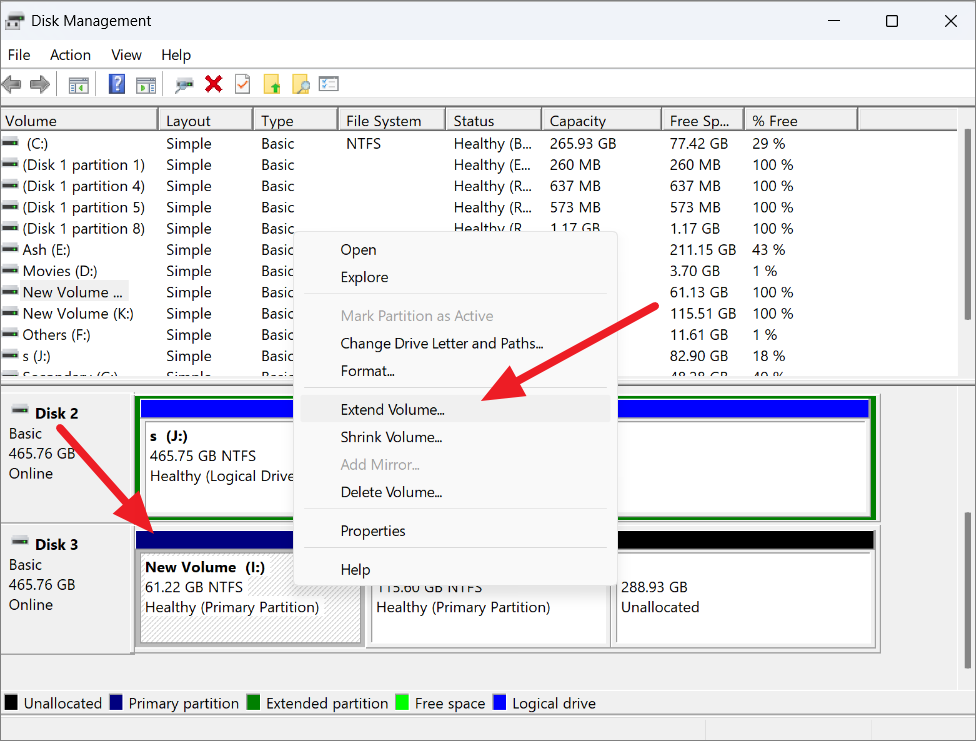
Step 3: Follow the Extend Volume Wizard to allocate available unallocated space to your partition.
If you cannot extend due to lack of unallocated space, consider shrinking another partition to create unallocated space.
5. Bypass Windows 11 Requirements
If your PC doesn't meet the requirements for TPM 2.0, Secure Boot, or processor, you can bypass these checks. Note that installing Windows 11 on unsupported hardware may lead to instability or lack of updates from Microsoft.
5.1. Bypass TPM 2.0 and CPU Requirements via Registry Editor
Step 1: Press Windows+R, type regedit, and press Enter to open the Registry Editor.
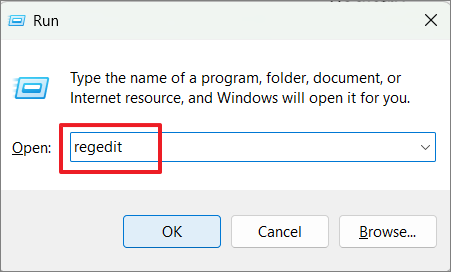
Step 2: Navigate to HKEY_LOCAL_MACHINE\SYSTEM\Setup\MoSetup. If the MoSetup key doesn't exist, create it by right-clicking on Setup, selecting New > Key, and naming it MoSetup.
Step 3: In the right pane, right-click and select New > DWORD (32-bit) Value. Name it AllowUpgradesWithUnsupportedTPMOrCPU.
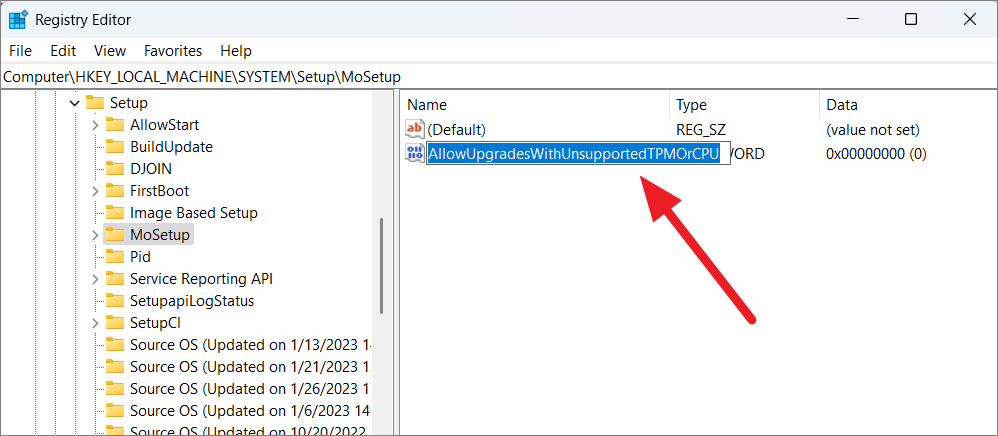
Step 4: Double-click the newly created value and set the Value data to 1. Click OK.
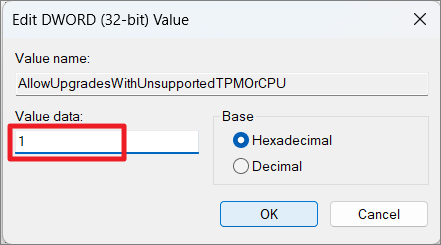
Step 5: Restart your PC and attempt the Windows 11 installation again.
5.2. Bypass All Requirements via Registry Editor
You can bypass TPM, Secure Boot, RAM, and storage requirements:
Step 1: Open the Registry Editor.
Step 2: Navigate to HKEY_LOCAL_MACHINE\SYSTEM\Setup.
Step 3: Right-click on Setup, select New > Key, and name it LabConfig.
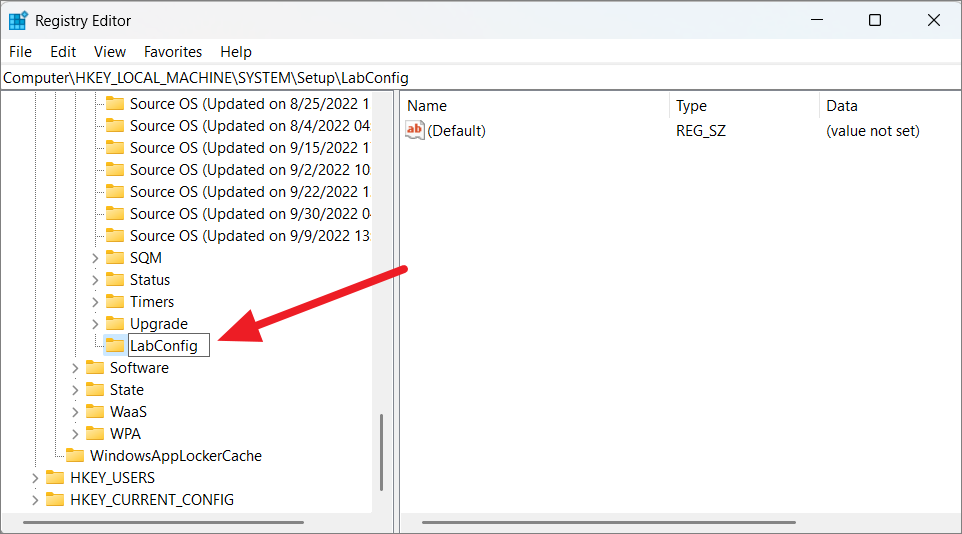
Step 4: In the LabConfig key, create the following DWORD (32-bit) Values and set their Value data to 1:
BypassTPMCheckBypassSecureBootCheckBypassRAMCheckBypassStorageCheckBypassCPUCheck

Step 5: Restart your computer and try installing Windows 11 again.
5.3. Create a Bootable USB Without Requirements Check Using Rufus
Using Rufus, you can create a Windows 11 installation media that bypasses the TPM and Secure Boot checks:
Step 1: Download Rufus from rufus.ie and install it.
Step 2: Download the Windows 11 ISO file from the official Microsoft website.
Step 3: Insert a USB drive (8 GB or larger) and open Rufus.
Step 4: In Rufus, select your USB drive and choose the Windows 11 ISO file.
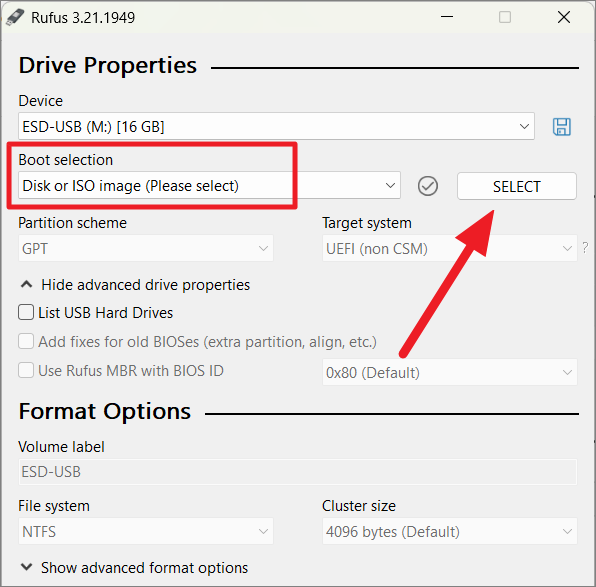
Step 5: In the Image option, select "Extended Windows 11 Installation (no TPM/no Secure Boot)."
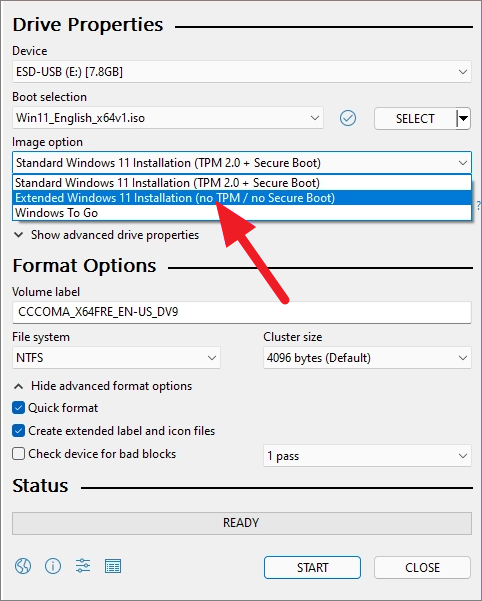
Step 6: Click Start and follow the prompts to create the bootable USB drive.
You can now use this USB drive to install Windows 11 without meeting the TPM and Secure Boot requirements.
By following these methods, you should be able to resolve the "This PC can't run Windows 11" error and proceed with the installation. Always ensure your data is backed up before making significant system changes.








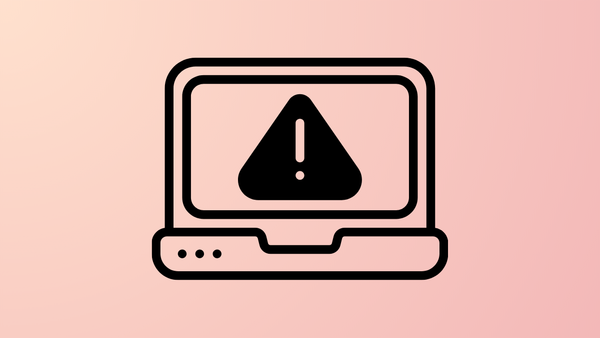
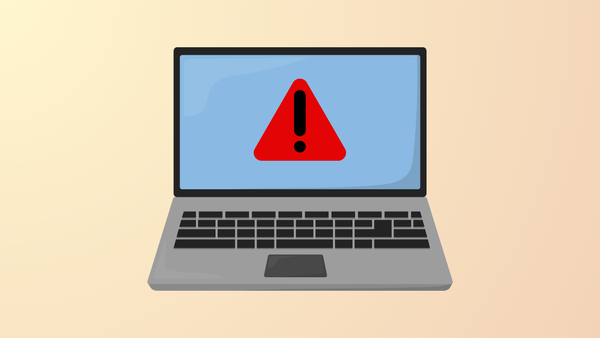
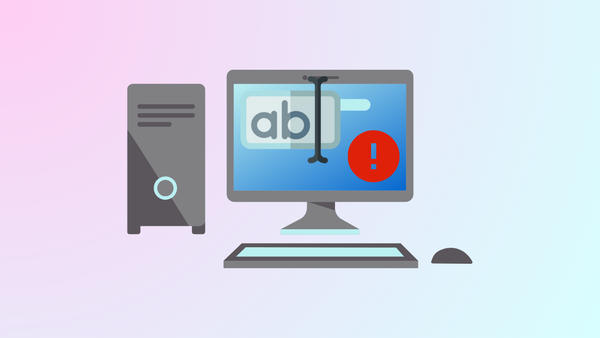
Member discussion